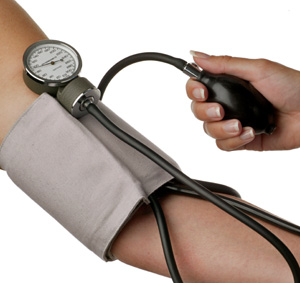Right Advice, Wrong Time
The Joint National Conference on Blood Pressure, a group backed by the National Institutes of Health, has just announced that 45 million Americans are at much greater health risk than they thought. With systolic blood pressure of 120 to 139 systolic (top number), and diastolic of 80 to 89 (diastolic or lower number), tens of millions of Americans are now said to be suffering from “prehypertension”, blood pressures that may precipitate higher rates of heart attack and stroke. By failing to acknowledge that blood pressure is a “moving target” which varies approximately 20 percent during the daytime when it is usually measured, the new guidelines will frighten and confuse millions.
 Blood pressure changes for many reasons, and it changes a lot. Right arm blood pressures are higher than left arm (in right handers); sitting blood pressure is different from standing blood pressure; blood pressure taken by a friend or family will be different than that taken by a doctor (white coat syndrome). Most importantly, blood pressure changes with time of day.
Blood pressure changes for many reasons, and it changes a lot. Right arm blood pressures are higher than left arm (in right handers); sitting blood pressure is different from standing blood pressure; blood pressure taken by a friend or family will be different than that taken by a doctor (white coat syndrome). Most importantly, blood pressure changes with time of day.
The changes are considerable. A person walking into a doctor’s office at 9 A.M. who has a normal blood pressure of 120/70 may find his or her blood pressure in the same office is 140/85 at 5 P.M. This is normal variation, what you should expect most days of your working life.
According to the guidelines your morning blood pressure is no problem. Your afternoon blood pressure may require you to be placed on two different anti-hypertensive drugs, perhaps for life.
What is the correct number? When is the right time to take blood pressure? The guidelines don’t say.
The new national blood pressure guidelines do point out that blood pressure be measured with a well calibrated blood pressure cuff, the cuff large enough, the arm at heart level, the patient seated and calm for five minutes, and the measurement checked at least twice.
When is the last time that happened in your doctor’s office?
The new guidelines give the right advice — Americans need to exercise more (a quarter of us do nothing), quit smoking, and eat more vegetables and fruits. But by refusing to recognize the importance of time in measuring blood pressure, they will scare many and confuse most, including doctors, and cause underdiagnosis.
Blood pressure is extremely important. But it has to be measured accurately to be meaningful. Accurate measurement requires:
Multiple measurements at the same time of day
The same conditions for measurement each time, including using the same arm
Three or more measurements on different days
Relatively relaxed clients and blood pressure takers who are not rushed.
Every part of our biology changes with time of day. Blood pressure is one element among hundreds. Your temperature will often increase 1.5 degrees to 2 degrees from morning to evening (think about that when you go through a SARS temperature screen at the airport). Weight may go up or down three pounds in a day with no meaningful change in dry weight. Aspirin will have far more gastric side effects in the morning than at night. Alcohol will have two to three times the effect at midnight than at 6 P.M.
Timing in medicine is important, for both diagnosis and treatment. If we are to protect the public health, it’s more important than ever.

